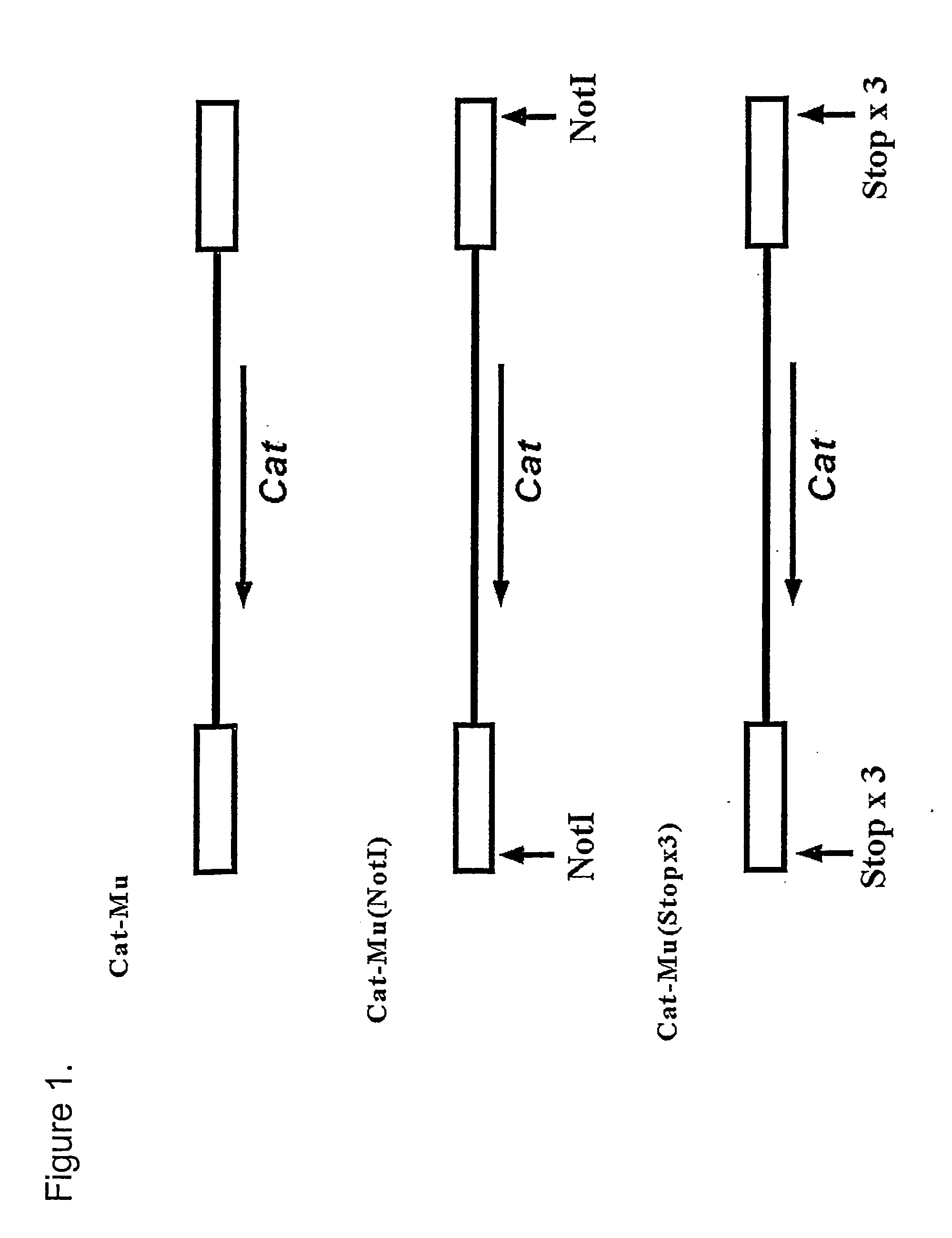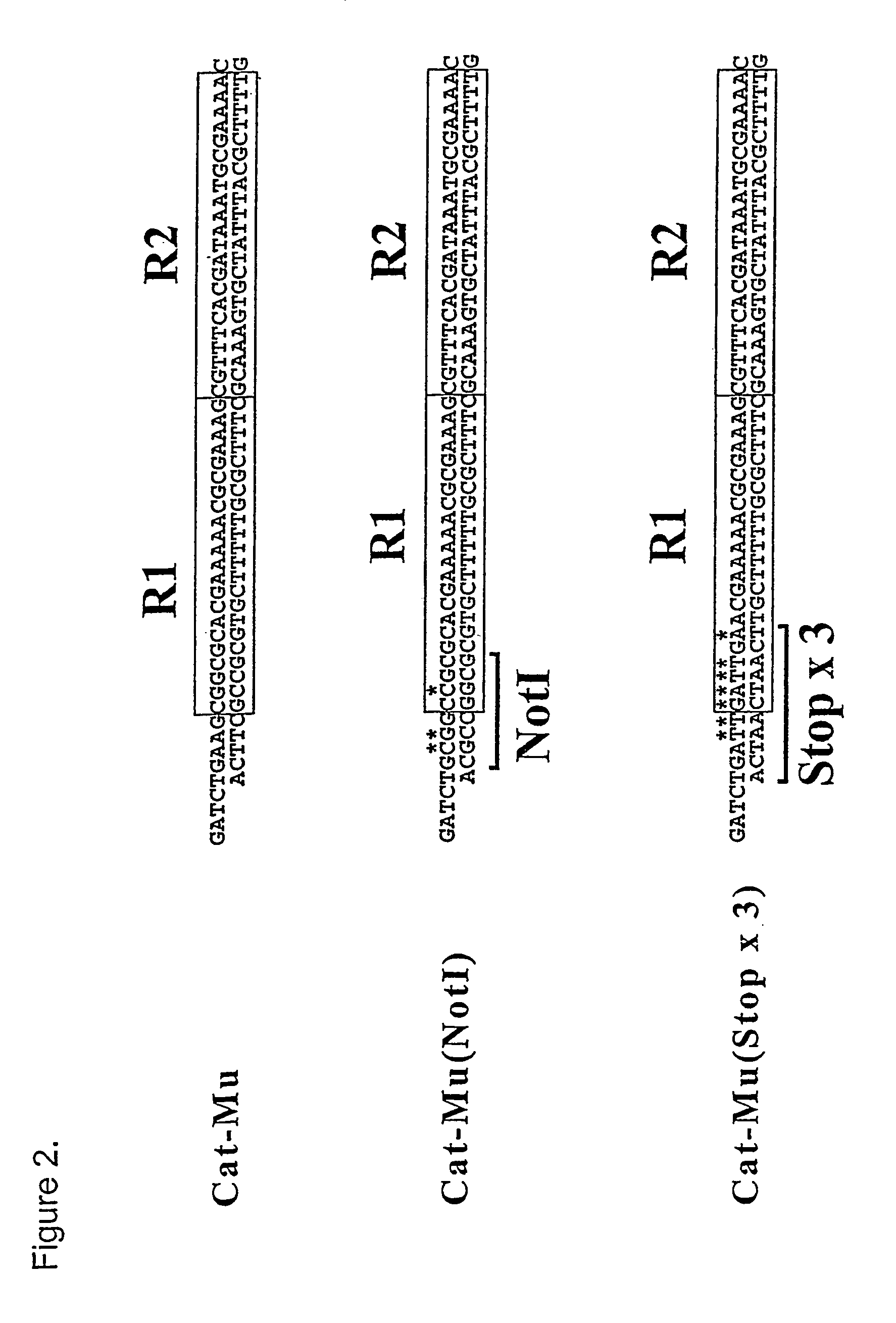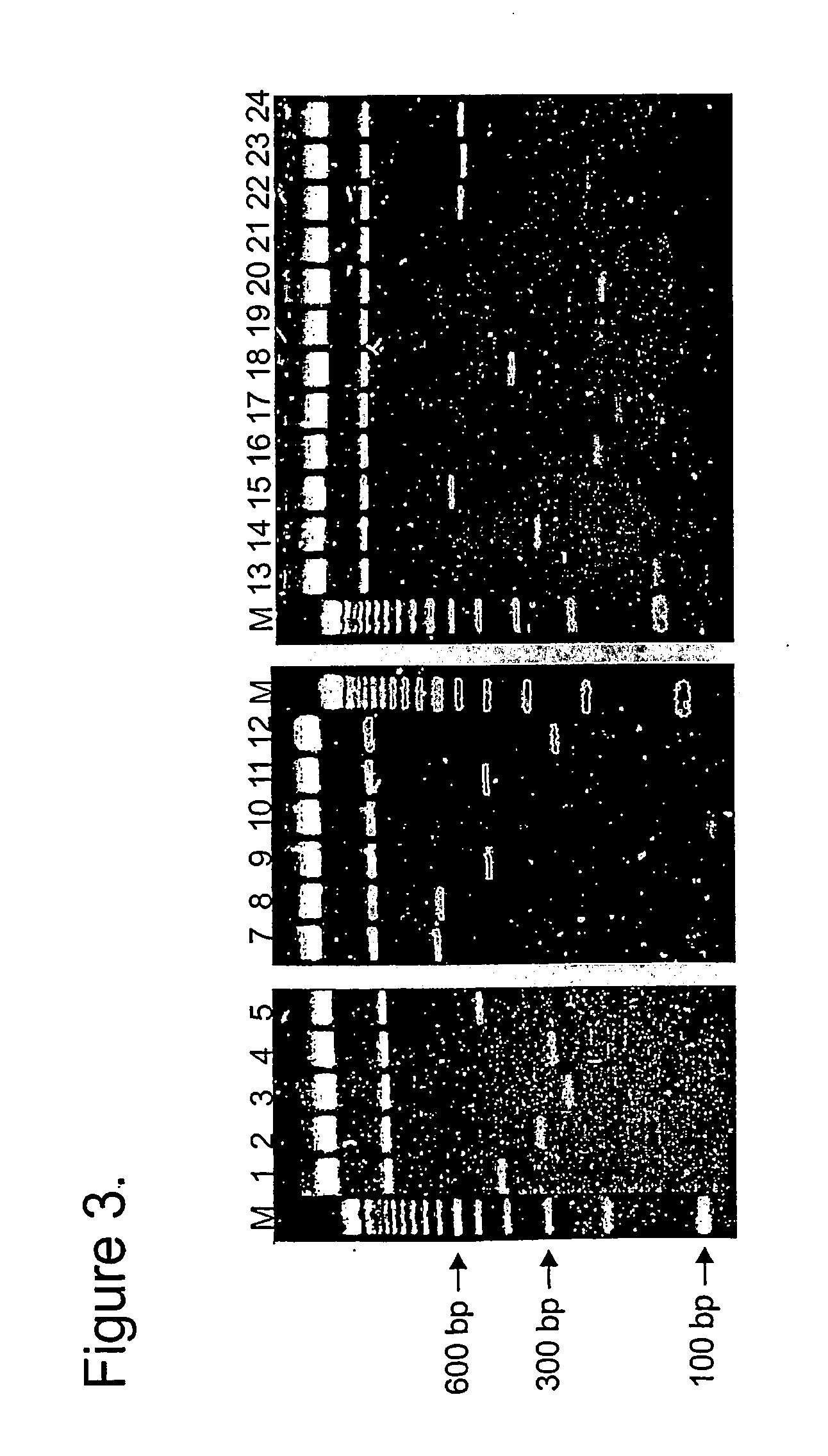Method and materials for producing deletion derivatives of polypeptides
- Summary
- Abstract
- Description
- Claims
- Application Information
AI Technical Summary
Benefits of technology
Problems solved by technology
Method used
Image
Examples
example 1
In vitro Transposition Reaction
[0053] In vitro transposition reaction (25 μl) contained 720 ng cat-Mu(Stop) transposon as a donor, 500 ng plasmid pHis6-MSO1 as a target nucleic acid, 0.2 μg MuA, 25 mM Tris-HCl at pH 8.0, 100 μg / ml BSA, 15% (w / v) glycerol, 0.05% (w / v) Triton X-100, 126 mM NaCl and 10 mM MgCl2. The reaction was carried out at 30° C. for 4 h.
[0054] Further details and variables of in vitro Mu transposition are described in Haapa et al. 1999ab and Savilahti et al. 1995, incorporated herein by reference.
example 2
Generation of a Pool of Mutants with C-terminal Deletions in Mso1
[0055] In vitro transposition reactions with Stop-Mu were performed essentially as described in Haapa et al. (1999a) with the exception that they contained 720 ng donor DNA (Stop-Mu×3) and 0,88 μg MuA. Ten reactions were pooled, phenol and chlorophorm extracted, ethanol precipitated, and resuspended in 30 μl of water. Several 1 μl aliquots were electrotransformed, each into 25 μl of DH5α electrocompetent cells, as described (Haapa et al. 1999a). Transposon-containing plasmid clones were selected on LB plates containing Ap and Cm. A total of ˜6×105 colonies were pooled and grown in selective LB-Ap-Cm medium at 37° C. for 3 h after which plasmid DNA was prepared from the pool with Qiagen Plasmid Midi kit. This plasmid preparation was subjected to a XhoI-HindIII double digestion and preparative agarose gel electrophoresis. The DNA fragment corresponding to transposon insertions into the Mso1-containing DNA fragment was ...
example 3
Restriction and Expression Analysis of Deletion Mutants
[0056] Mutant clones were analyzed for deletions by BamHI digestion and DNA sequencing. For protein expression analysis, single mutant plasmids were introduced into BL21(DE3) expression strain. Selective medium was inoculated with o / n culture of bacteria containing mutant plasmid and grown until OD600 was 0.4-0.7. Protein expression was induced with 1 mM IPTG for 3 hours and samples were withdrawn for SDS-PAGE analysis. Bacterial lysates were run on 15% gels and stained with GelCode blue stain (Pierce) as recommended by the supplier.
PUM
 Login to View More
Login to View More Abstract
Description
Claims
Application Information
 Login to View More
Login to View More - R&D
- Intellectual Property
- Life Sciences
- Materials
- Tech Scout
- Unparalleled Data Quality
- Higher Quality Content
- 60% Fewer Hallucinations
Browse by: Latest US Patents, China's latest patents, Technical Efficacy Thesaurus, Application Domain, Technology Topic, Popular Technical Reports.
© 2025 PatSnap. All rights reserved.Legal|Privacy policy|Modern Slavery Act Transparency Statement|Sitemap|About US| Contact US: help@patsnap.com



